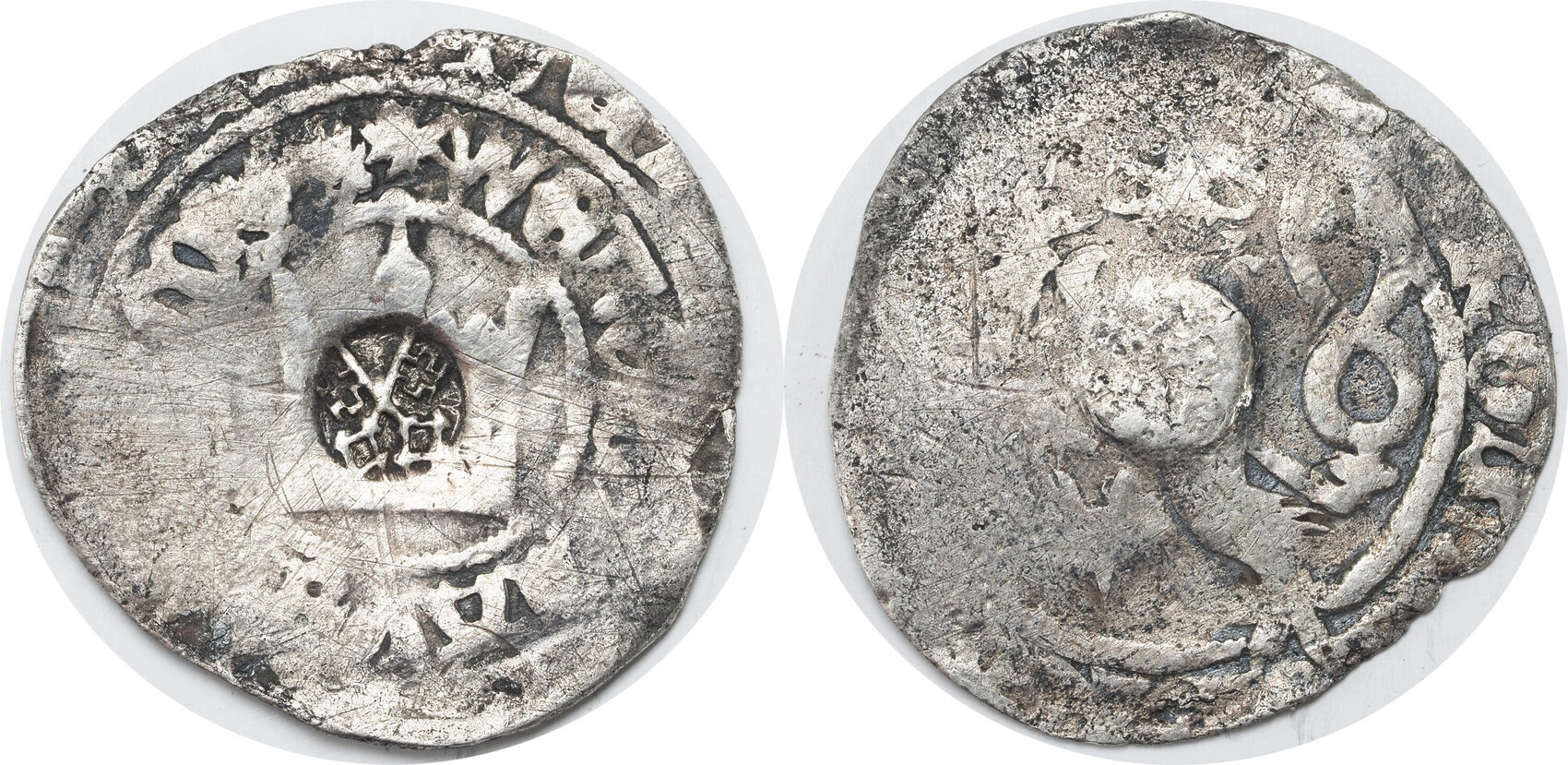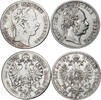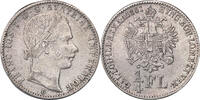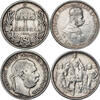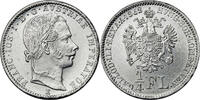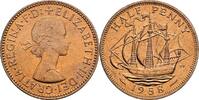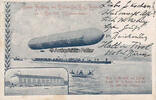MA-ID: 127502454
Bewertungen Stankov
O.K.
Gran profesional,todo perfecto
ok
Everything OK.
Regensburg Prager Groschen 1379-1419 Civic Countermark on Wencezlaus IV Coin. Schön/SS
Filip Stankov eU 

2
Seit 2 Jahren bei MA-Shops
435 Bewertungen,
100 % Positiv (seit 24 Monaten)
Weltweiter Versand
215,00 EUR
Rabatt 35,00 EUR / 14%
Differenzbesteuert nach §25a UStG
zzgl. 12,00 EUR Versand ( nach Deutschland )
Lieferzeit: 6 - 10 Tage*
zzgl. 12,00 EUR Versand ( nach Deutschland )
| Bestellhotline +49 (0)2871 2180 383 |
| Zahlungsarten |
| Überweisung |
1379-1419, Regensburg (City). Prague Grossus w. Civic Countermark on Wencezlaus IV Coin.
Mint period: 1379-1419 AD.
Reference: Beckenbauer page 20, Krusy R 4, 1.
Denomination: Prague Grossus ("Pragergroschen").
Mint Place: Prague (the coin), Regensburg, Upper-Paletinate (the countermark)
Condition: The coin is Fine, heavily worn and with a few scratches, the countermark about VF.
Material: Silver (.623)
Diameter: 27mm
Weight: 1.7gm
Obverse: Lion rampant left, within inner circle. Legend around.
Legend: + GROSSI PRAGENSES
Reverse: Royal crown within double band of legends.
Legend: + WENCEZLAVS TERCIVS / +DEI GRATIA REX BOEMIE
From 960-1260, coins circulated freely only in areas surrounding Prague, creating a trading network with some specialization. In the rural areas, peasants continued to trade food and forest products for manufactured goods, while in the farther regions of Bohemia the economy remained centered in tribal hillforts and the immediate local availability of goods.
However, everything changed with the discovery of silver mines in Bohemia. From 1250-1412, preciousmetalproduction shifted from western europe to Bohemia. The massive output of silver mines at Jihlava enabled King Otakar II to draw 2000 marks, or 4 tonnes of silver, per year for his own personal coffers. In 1298, Kutna Hora's silver stores were discovered and in its first, this mine produced 6.5 tonnes of silver. Although throughout its operation 1298-1420, the diminishing output ended up averaging two tonnes of silver per year.
The new supplies of silver and gold flooded economies everywhere in East Central Europe, leading to inflation in price and a suddenly very wealthy international merchant class. Coin issues were regularized with the new large groschen. This coin was the heaviest coin struck in Bohemian history, leading to its name "denarius grossus," or "heavy dinar". The Prague Grossus was first struck in Kutna Hora in 1300 by King Vaclav II.
As far as income goes, a skilled artisan or mercenary soldier in 15th century Prague made 1 groschen per day as a wage or living allowance.
Wenceslaus IV (also Wenceslas; Czech: Václav; German: Wenzel, nicknamed "the Idle"; 26 February 1361 – 16 August 1419), also known as Wenceslaus of Luxembourg, was King of Bohemia from 1378 until his death and King of Germany from 1376 until he was deposed in 1400. As he belonged to the House of Luxembourg, he was also Duke of Luxembourg from 1383 to 1388.
Mint period: 1379-1419 AD.
Reference: Beckenbauer page 20, Krusy R 4, 1.
Denomination: Prague Grossus ("Pragergroschen").
Mint Place: Prague (the coin), Regensburg, Upper-Paletinate (the countermark)
Condition: The coin is Fine, heavily worn and with a few scratches, the countermark about VF.
Material: Silver (.623)
Diameter: 27mm
Weight: 1.7gm
Obverse: Lion rampant left, within inner circle. Legend around.
Legend: + GROSSI PRAGENSES
Reverse: Royal crown within double band of legends.
Legend: + WENCEZLAVS TERCIVS / +DEI GRATIA REX BOEMIE
From 960-1260, coins circulated freely only in areas surrounding Prague, creating a trading network with some specialization. In the rural areas, peasants continued to trade food and forest products for manufactured goods, while in the farther regions of Bohemia the economy remained centered in tribal hillforts and the immediate local availability of goods.
However, everything changed with the discovery of silver mines in Bohemia. From 1250-1412, preciousmetalproduction shifted from western europe to Bohemia. The massive output of silver mines at Jihlava enabled King Otakar II to draw 2000 marks, or 4 tonnes of silver, per year for his own personal coffers. In 1298, Kutna Hora's silver stores were discovered and in its first, this mine produced 6.5 tonnes of silver. Although throughout its operation 1298-1420, the diminishing output ended up averaging two tonnes of silver per year.
The new supplies of silver and gold flooded economies everywhere in East Central Europe, leading to inflation in price and a suddenly very wealthy international merchant class. Coin issues were regularized with the new large groschen. This coin was the heaviest coin struck in Bohemian history, leading to its name "denarius grossus," or "heavy dinar". The Prague Grossus was first struck in Kutna Hora in 1300 by King Vaclav II.
As far as income goes, a skilled artisan or mercenary soldier in 15th century Prague made 1 groschen per day as a wage or living allowance.
Wenceslaus IV (also Wenceslas; Czech: Václav; German: Wenzel, nicknamed "the Idle"; 26 February 1361 – 16 August 1419), also known as Wenceslaus of Luxembourg, was King of Bohemia from 1378 until his death and King of Germany from 1376 until he was deposed in 1400. As he belonged to the House of Luxembourg, he was also Duke of Luxembourg from 1383 to 1388.
| Versandkosten | ||||
|---|---|---|---|---|
| bis 70,00 EUR | 100,00 EUR bis 300,00 EUR | 300,00 EUR bis 2000,00 EUR | 2000,00 EUR bis 35000,00 EUR | |
| Deutschland | 10,00 EUR | 12,00 EUR | 15,00 EUR | 25,00 EUR |
| Österreich | 8,00 EUR | 10,00 EUR | 12,00 EUR | 23,00 EUR |
| Vereinigte Staaten von Amerika | 50,00 EUR | 50,00 EUR | 50,00 EUR | 35,00 EUR |
| Europäische Union | 10,00 EUR | 15,00 EUR | 20,00 EUR | 25,00 EUR |
| Welt | 13,00 EUR | 15,00 EUR | 25,00 EUR | 35,00 EUR |
Informationen zum Kauf bei MA-Shops
Bestellungen bei MA-Shops sind jederzeit möglich und werden innerhalb von 2-4 Arbeitstagen verschickt.
Ein über die MA-Shops abgesicherter Kauf findet niemals außerhalb von MA-Shops statt.
Bestellen Sie sicher online mit dem MA-Shops Warenkorb.
Vielen Dank.
Ein über die MA-Shops abgesicherter Kauf findet niemals außerhalb von MA-Shops statt.
Bestellen Sie sicher online mit dem MA-Shops Warenkorb.
Vielen Dank.
|
Verkäufer-Startseite | 0Warenkorb | AGB | Impressum | MA AGB | Datenschutzerklärung | Garantie | MA-Shops Neuzugänge Copyright ® 2001-2025, MA-SHOPS Muenzen All Rights Reserved. Designated trademarks and brands are the property of their respective owners. |
 Münzen beim Fachhändler kaufen
Münzen beim Fachhändler kaufen


